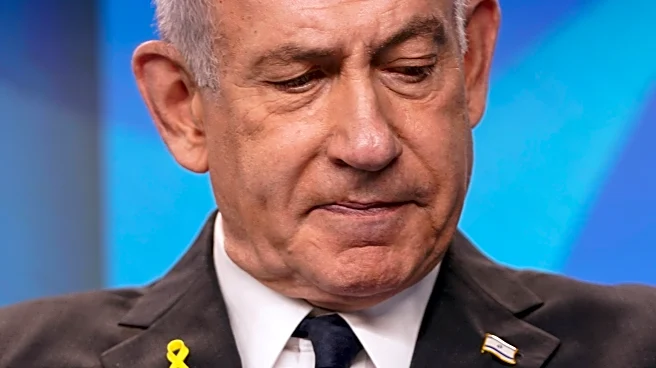What is the story about?
What's Happening?
A coalition of politicians, scientists, and academics has called for the establishment of 'AI Red Lines' at the United Nations General Assembly. This initiative aims to create broad guardrails to prevent universally unacceptable risks associated with artificial intelligence deployment. The proposal, known as the Global Call for AI Red Lines, seeks to have these guidelines in place by the end of 2026. Over 200 signatures from industry experts, political leaders, and Nobel Prize winners have been gathered in support of this initiative. Notable figures such as Mary Robinson, former President of Ireland, and Juan Manuel Santos, former President of Colombia, have endorsed the proposal. The initiative suggests prohibiting AI from launching nuclear weapons or engaging in mass surveillance, and ensuring AI systems can be overridden by human intervention. The proposal emphasizes the need for a clear list of prohibitions, robust verification mechanisms, and an independent body to oversee implementation.
Why It's Important?
The call for AI Red Lines is significant as it addresses the growing concerns over the potential misuse of artificial intelligence. As AI technology rapidly advances, the lack of comprehensive regulations poses risks to global security and privacy. Establishing these guidelines could prevent AI from being used in harmful ways, such as controlling nuclear weapons or conducting mass surveillance. The initiative highlights the need for international cooperation to ensure AI is developed and deployed responsibly. Countries like the United States have already committed to certain restrictions, but the proposal aims to create a unified global approach. The success of this initiative could lead to safer AI practices and prevent catastrophic outcomes.
What's Next?
The next steps involve governments hosting summits and working groups to discuss and agree on the specifics of the AI Red Lines. The proposal encourages countries to collaborate and address competing motives that may arise during these discussions. The United States, which has previously committed to not allowing AI to control nuclear weapons, may face challenges in aligning with the proposal due to differing interests within its intelligence community. The outcome of these discussions will determine the feasibility and implementation of the AI Red Lines by the proposed deadline of 2026.
AI Generated Content
Do you find this article useful?














